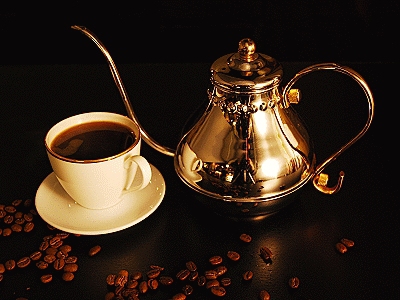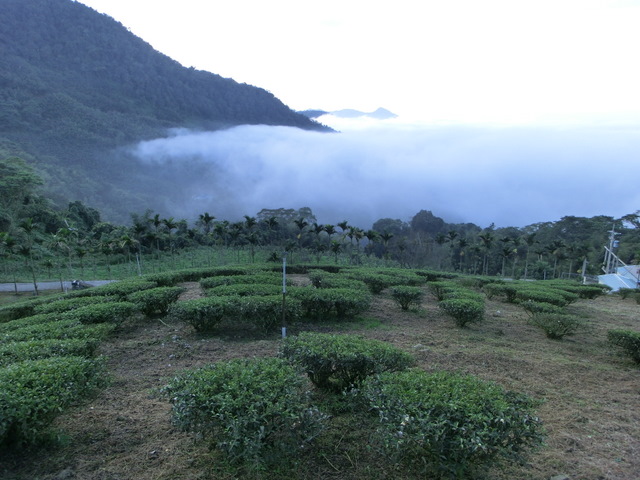Hand-brewed Honduran coffee beans how to brew coffee Honduras San Juan washed bourbon
Honduran coffee beans Honduras roasted to the level of deep city roasting, a little bit of oil. Honduran coffee beans are not as clear and light as Yunnan small grains of coffee garden beans; after grinding, the aroma of coffee spreads out, feeling more concentrated and a little tight.
Hand-washed Honduran coffee beans Honduras in the office. Usually, the coffee powder of freshly roasted coffee beans expands more by hand, but the water absorption expansion of Honduran Honduras coffee powder is relatively small after hand pre-soaking compared with Yunnan small grains of coffee garden beans.
Honduran coffee bean Honduras, the most obvious feeling is relatively soft and thick, occasionally feel a little sweet; perhaps because of the degree of baking, do not feel the acid characteristics of Honduras.
Coffee in Honduras is imported from El Salvador. Coffee production in Honduras increased significantly after the Brazilian frost in 1975, more than tripling in 20 years. The coffee grade in Honduras depends on altitude: coffee grown at 700-1000 meters above sea level is medium, coffee grown at 1000 meters above sea level is superior, and coffee grown at 1500 meters above sea level is superior. Honduras produces high-acid high-quality coffee.
San Juan Ciudo is a small village in central Honduras, 40 kilometers northeast of Tegucigalpa, the capital of Honduras. The town is under the jurisdiction of Francisco Morz á n, in addition, the jurisdiction of Francisco Morz á n includes Nuevo Rosario, Guacamaya and Plan Grande, with a total population of about 1400.
Although San Juan Theodore is historically famous for its mineral deposits, it is now highlighted by its location in the buffer zone of La Tigra National Park, a rainforest ecosystem and the first national park in Honduras. The park acts as a huge reservoir, providing domestic water for 500000 residents of the capital.
Because Honduras is located in the tropics, the temperature change in San Juan Theodore is small throughout the year. Therefore, the so-called winter is actually the rainy season, while the so-called summer is actually the dry season. In the tropics, altitude has a greater effect on temperature than the duration of precipitation in a year. San Juan Seto is located more than 1239 meters above sea level, making the temperature slightly cooler all the year round. In summer (March-June), the maximum temperature is usually about 26C, while the average minimum temperature is about 18C. The highest average temperature in winter is 20 ℃ and the lowest is about 14 ℃.
The modern economy of San Juan Seto is largely dependent on agriculture, most of which is small-scale coffee production, and its climate and altitude are very conducive to the production of high-quality coffee beans. COMISAJUL, a partnership of hundreds of small coffee growers in central Honduras, is located in San Juan Theto. COMISAJUL is a cooperative organized by hundreds of coffee farmers in the San Juan Heido region, where coffee is grown in mountains 1450-1550 meters above sea level and shaded by bananas, avocados, papayas and other fruit trees. Coffee farmers pick ripe fruits by hand during the harvest season, wash them and then dry them in the sun. The fermented water with coffee peel and pulp produced by water washing is collected and used as fertilizer for coffee trees. This batch of coffee tastes very clean, high sweetness, very soft acidity, with the flavor of milk chocolate.
Country: Honduras
Producing area: San Juan Theodore
Altitude: 1450-1550 m
Treatment: washing
Variety: bourbon
Handlers: COMISAJUL Cooperation Organization
Flavor: clean, baked nuts, milk chocolate

Important Notice :
前街咖啡 FrontStreet Coffee has moved to new addredd:
FrontStreet Coffee Address: 315,Donghua East Road,GuangZhou
Tel:020 38364473
- Prev

Introduction of Mexican boutique coffee taste flavor Mexican coffee producing area
Coffee production is concentrated in the south near Guatemala, with mountains running through the east and west, making its mountains tilted, making it an ideal terrain for coffee cultivation. Coffee cultivation is still common. According to the order, the highland is classified into three kinds of high-yield coffee: Arudora, Prima, Rabad and Barnabad. Coffee beans range in size from medium to large, with a rough appearance and aroma.
- Next

China Coffee Network recommends coffee bean producing area-Central America-Honduras (Honduras) washed bourbon
Well-known representative coffee: Honduran coffee seems strange to many coffee drinkers. When it comes to coffee production, the geographical conditions of Honduras are no less than those of neighboring coffee-producing countries such as Guatemala and Nicaragua. However, in the past, Honduras was more well-known in the consumer market because it did not have strong support in the handling and transportation of raw beans.
Related
- Does Rose Summer choose Blue, Green or Red? Detailed explanation of Rose Summer Coffee plots and Classification in Panamanian Jade Manor
- What is the difference between the origin, producing area, processing plant, cooperative and manor of coffee beans?
- How fine does the espresso powder fit? how to grind the espresso?
- Sca coffee roasting degree color card coffee roasting degree 8 roasting color values what do you mean?
- The practice of lattes: how to make lattes at home
- Introduction to Indonesian Fine Coffee beans-- Java Coffee producing area of Indonesian Arabica Coffee
- How much will the flavor of light and medium roasted rose summer be expressed? What baking level is rose summer suitable for?
- Introduction to the characteristics of washing, sun-drying or wet-planing coffee commonly used in Mantenin, Indonesia
- Price characteristics of Arabica Coffee Bean Starbucks introduction to Manning Coffee Bean Taste producing area Variety Manor
- What is the authentic Yega flavor? What are the flavor characteristics of the really excellent Yejasuffi coffee beans?

